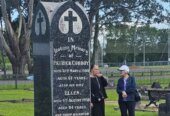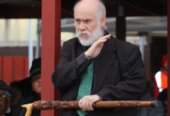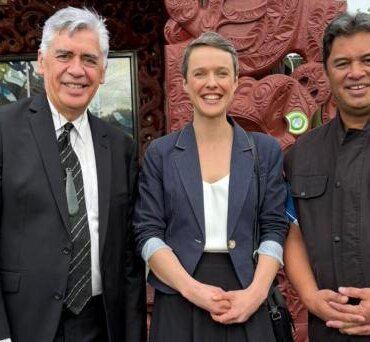
Fairfield College principal, Richard Crawford with city councillor Sarah Thomson and filmmaker, Robbie Neha
A new film centred on Hamilton’s Fairfield College has deep connections spanning the Waikato, Waipā and King Country.
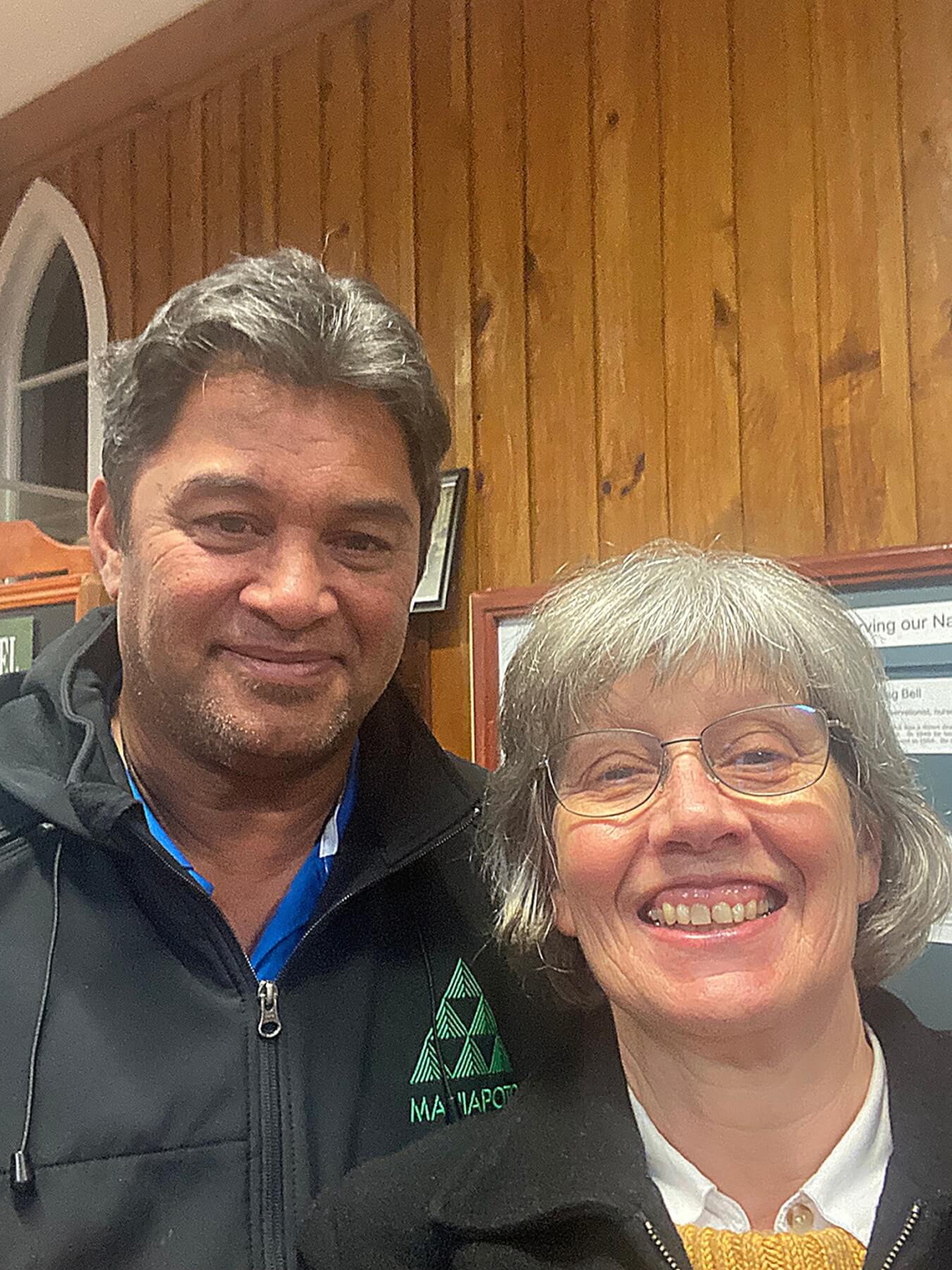
Robbie Neha and Clare St Pierre
Telling the story of Fairfield College, ‘Kukutaaruhe – Ngā Taonga Tuku Iho’ – treasures of the past – explores bonds between the school, the people and the land.
An advance screening was held at the college ahead of Matariki.
Film maker Robbie Neha, a former Fairfield College head boy and former board member based in Ōtorohanga has had more than 35 years’ experience in film and television.
“I always wanted to tell this story,” Neha said. “It’s about the school but also Ngāti Wairere. I was honoured when Richard contacted me.”
Principal Richard Crawford said he was inspired to contact Neha and historian Wiremu Puke after encountering cultural narratives in Alaska and Canada during a sabbatical.
“The school was opened in 1957, so I thought it was about time we put something on video to acknowledge the land where the school sits and especially to pay tribute to Ngāti Wairere, the mana whenua – it’s an acknowledgement of their narratives,” Crawford said.
“It’s a story about the school but also the land and where we hope to be in future by making it more sustainable, raising consciousness of this for our community.”
This message brings urban biodiversity and gully restoration initiative, The Fairfield Project, into frame. The project has been responsible for planting more than 31,000 trees across the Kukutaaruhe Gully.
“The project featured quite strongly in the film – it’s an important part because it’s about the land and how we’re going to preserve it.”
The documentary will soon be accessible through the Fairfield College website.
Past and present students of the college feature on screen and behind the scenes. Puke and Neha, both Ngāti Wairere, were instrumental, Crawford said.
“Wiremu was critical in making sure what we were showing was culturally appropriate and accurate. It couldn’t have happened without him or without Robbie because of his ideas and production skills.”
‘Kukutaaruhe – Ngā Taonga Tuku Iho’ could encourage other schools to explore and share their history and ties to mana whenua on film.
“It certainly wasn’t my intention, but I hope it does motivate others,” Neha said. There are many more schools across our towns and districts, so I certainly hope that there will be more.”
Neha has worked in numerous governance roles including as the Taarewaanga Marae representative on the Ōtorohanga Kiwi House Trust and as a committee member of the Pirongia Heritage and Information Centre.
Guests at the centre’s recent annual meeting heard Neha discuss filmmaking, whakapapa and history.
Neha is well known for his books and documentaries about the New Zealand Wars, including works in collaboration with University of Waikato professor and News columnist Tom Roa, and Corey Wilson.
Ensuring Māori voices feature in history was essential, Neha said.
“Many of our historical books were written by colonials – some would say ‘to the victors go the spoils’. We’ve referred to James Cowan’s writing, among others, which is all part of being a good researcher, but we’ve also done our own research. We’ve documented, recorded and captured what our tūpuna told us.”
‘Ōrākau, Ka Aowhia Te Rangi – A Rich History poorly known’ concentrates on the final battle of the Waikato War, the scene of Rewi Maniapoto’s last stand and recalls the infamous attack on the peaceful settlement of Rangiaowhia near Kihikihi.
Another book, by Neha’s aunt Dr Kahu McClintock, ‘E Paa Too Hau – Softly blows the wind’, was released in February to mark the anniversary of Rangiaowhia.
“It was lovely to share Ngāti Wairere’s history of Rangiaowhia, of the place, not the conflict, so future generations can understand it,” Neha said.
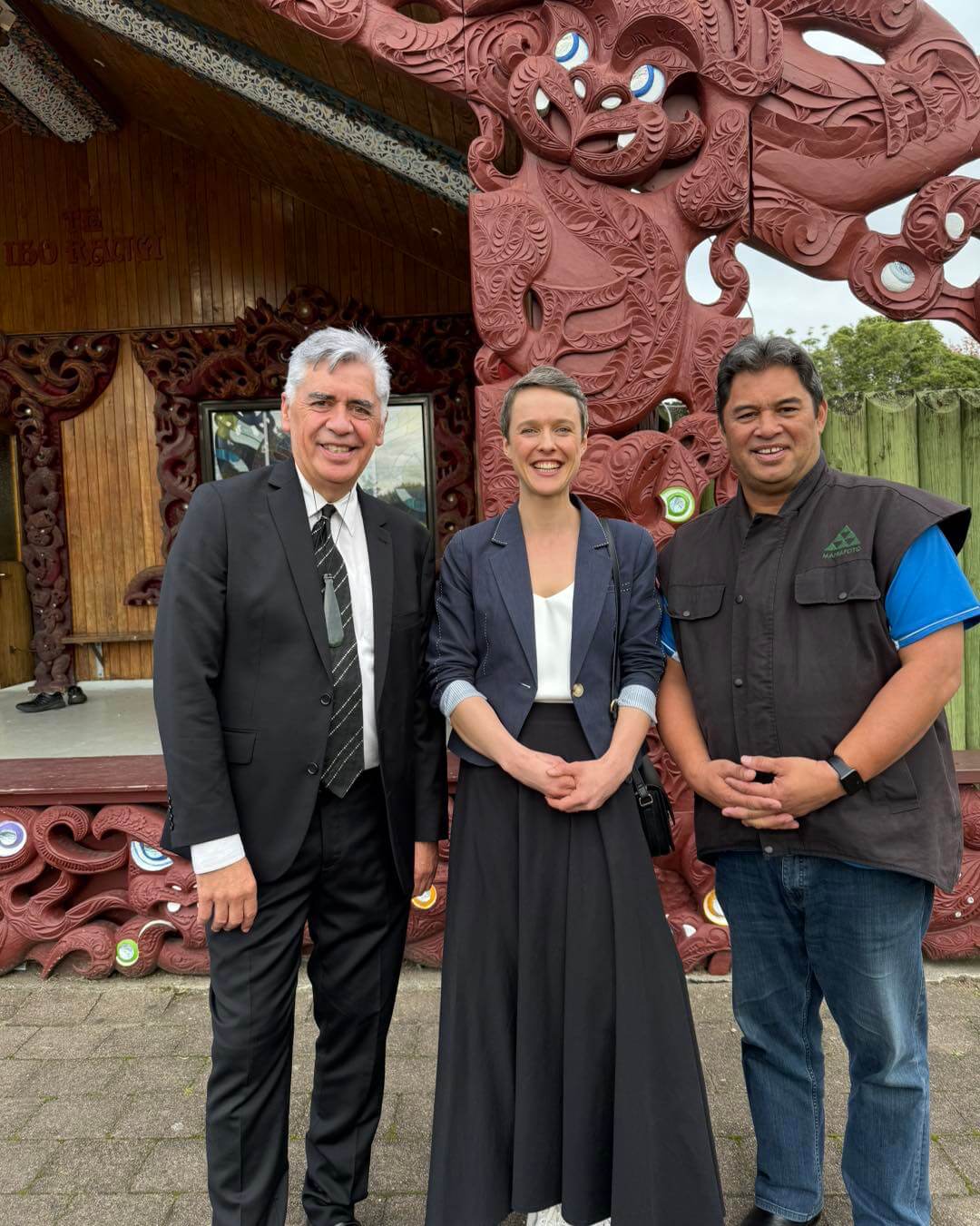
Fairfield College principal, Richard Crawford with city councillor Sarah Thomson and filmmaker, Robbie Neha attended an advance screening of a new film about Fairfield College.




